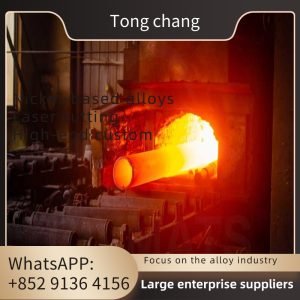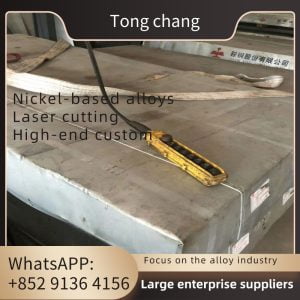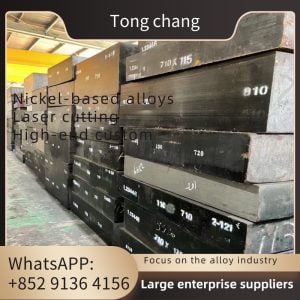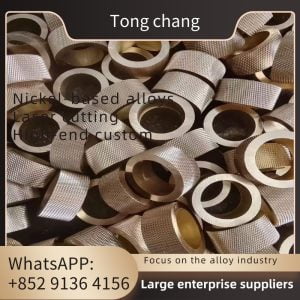| Material: | WP304/WP316L | Size: | 1/2′ – 24′ |
|---|---|---|---|
| Surface Finished Type: | Serrated Finished | Types: | Type A, Type B, Type C, Type D |
| Manufacturing Standard: | ASME/ANSI B16.9, JIS, DIN, EN, API 5L, Etc. | Technique: | Precision Turning Process |
| High Light: | WP316L Stainless Steel Stub End, High Precision Stainless Steel Stub End, Serrated Finished Ss Stub End | ||
HIGH PRECISION WP304 WP316 STUB END STAINLESS STEEL WITH GOOD QUALITY
Overview
Stainless steel stubs ends can be used in a variety of industries such as chemical, petrochemical, food processing, beverage manufacturing, power generation plants, and more. These fittings are often used in pipelines for connecting two pipes with different diameters. Additionally, they are useful for connecting pipes with different wall thicknesses or for connecting dissimilar materials like steel, copper, and plastic.
The most common material used for Stainless Steel Stub End is 304/304L or 316/316L grade stainless steel. They come with a tapered end which makes them easier to fit into the pipe joint and also allows them to form a tight seal when installed properly. Additionally, these fittings have superior corrosion resistance due to their chromium content which makes them ideal for use in corrosive environments.
Do you know the function of stainless steel stub ends?
- Improve the stability and sealing of pipelines
Stainless steel stub ends refers to the process of folding the pipe opening inward or outward to form a circular edge, which can improve the stability and sealing of the pipeline to a certain extent. This is because a sealing ring is formed at the stainless steel pipe mouth after flanging, which increases the load-bearing capacity and stability of the pipeline. At the same time, stub ends can also make the interface of the pipeline more secure and less prone to loosening and detachment due to external forces.
- Reduce the occurrence of corrosion in stainless steel pipes
Stainless steel pipes are prone to corrosion during use, and stainless steel pipe flanging can extend the service life of the pipeline and reduce the occurrence of stainless steel pipe corrosion. This is because the flipped edge forms a protective layer that blocks the contact between external oxygen and water, reducing the risk of corrosion at the pipeline interface. At the same time, stainless steel stub ends can also improve the wear resistance and pressure resistance of stainless steel pipes, reducing the risk of pipeline rupture due to its own load and external force impact.
- Increase the aesthetics of stainless steel pipes
Stainless steel stub ends can provide a more aesthetically pleasing appearance at the pipe opening, making it more coordinated with other pipes, valves, and flanges. This is particularly important for some equipment and pipelines that require appearance requirements. At the same time, flanging also helps to reduce dust and impurities at the pipeline interface, facilitating future cleaning and maintenance.
In summary, stainless steel stub ends can not only improve the stability and sealing of the pipeline, but also extend the service life of the pipeline and increase its aesthetics. Therefore, the application of flanging technology is very necessary in the production and use of stainless steel pipes.
Stub Ends Common Types
Stub ends are offered in three different ways, type A, B and C. Type A and B stub end are similar to forged fittings, such as elbows and tees, and type C stub end are made in customized sizes.
- Type A
The type A stub end is used for standard lap joint flange. The lap thickness on the stub end is greater than or equal to the nominal thickness of pipe wall. In addition, the outer corner radius of the type A can receive the lap joint flange. The inside corner is square. Lap usually has a machined serrated face.
- Type B
The type B stub end is used for standard slip on flanges as lap flanges. The lap thickness on these short ends is greater than or equal to the nominal thickness of pipe wall. Also, the outer corner radius of type B is small enough to receive the slip on flange that can be used as a backup flange. The inner corner is square. Lap usually has a machined serrated face.
- Type C
The type C stub end can be used for standard lap joint flange and slip on flange. It is flared leaving a rounded edge at the inside diameter of the lap. If necessary, the radius can be made closed to a square. The lap thickness is 75% of the pipe wall. The type C is very short enough to accommodate any backup flange. The lap joint on type C is smooth, and it is not machine.
Stainless Steel Composition
| Type | Cr | Ni | Cmax | Other Elements | Major Characteristics |
|---|---|---|---|---|---|
| 304 | 18.00-20.00 | 8.00-10.00 | 0.08 | – | Low carbon variation of Type 302. Minimizes carbide precipitation during welding |
| 304L | 18.00-20.00 | 8.00-10.00 | 0.03 | – | Extra-low carbon content eliminates harmful carbide precipitation due to welding |
| 309 | 22.00-24.00 | 12.00-15.00 | 0.20 | – | High strength and resistance to scaling at high temperatures |
| 310 | 24.00-26.00 | 19.00-22.00 | 0.20 | – | Higher alloy content improves basic characteristics of Type 309 |
| 316 | 16.00-18.00 | 10.00-14.00 | 0.08 | Mo 2.00-3.00 | Mo improves general corrosion and pitting resistance and high temperature strength over that of Type 302 |
| 316L | 16.00-18.00 | 10.00-14.00 | 0.20 | Mo 2.00-3.00 | Extra-low carbon version of Type 316. Eliminates harmful carbide precipitation due to welding |
Application:
- Petroleum
- Chemical plant
- Power sector
- Gas Industry
- Hardware tools
- Metallurgy
- Machinery
- Construction
- Shipbuilding








